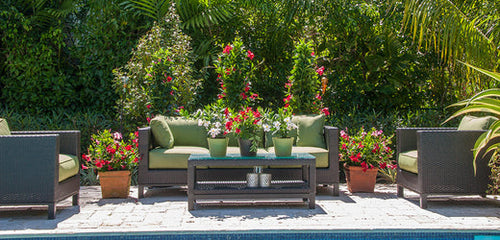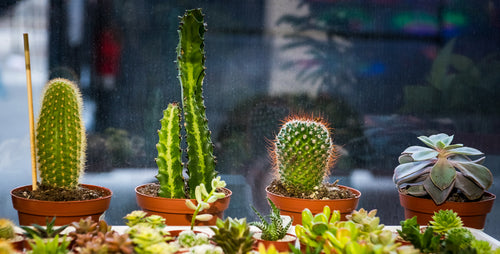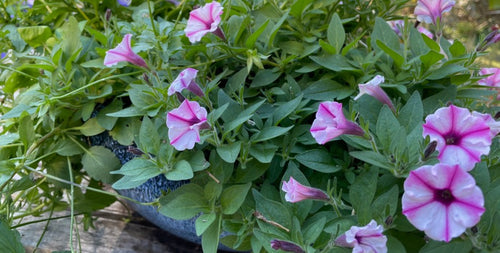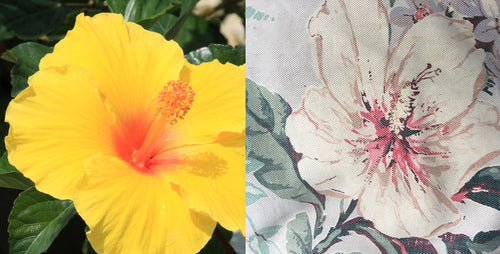If you live in an area that experiences below-freezing winter temperatures, you have a choice every fall. Do you let tender tropical plants live by overwintering them inside? Or do you treat them as annuals and get new ones next year?
Overwintering my favorite tropical plants used to be a fall tradition when I lived in the Midwest. Each summer as I enjoyed my tropical plants, I’d decide which varieties were going to live, and which I’d sacrifice to winter's freezing temperatures. I always told myself I’d be smart and systematic about it come fall. But invariably, autumn would come and the evening before the first expected frost, I’d rush home from work and hurriedly start getting my plants ready to go in.
Over the years, I’d brought hundreds of plants inside before killing frosts hit. Some prized plants went indoors every fall, then back outside every spring as temperatures warmed. Others would go in and out a year or two before I found something I liked better to take their place in my home. And a bunch, I’m afraid, didn’t make it through the winter to go back out the next year.
Here’s how you can save your tropical plants for the winter.
Step 1: Hose them Down
The first thing I’d do is give my plants and pots a good washing with the garden hose. This reduces the amount of clean up after your plants are inside. It also helps cut back on hitchhikers you don’t want inside.
Step 2: Cut them Back
Going from a bright, sunny spot outdoors to your living room will shock a plant. After all, plants don’t move around from environment to environment in nature. The major symptom of this shock is that they’ll drop a lot of leaves. This is natural and nothing to worry about.
The haircut reduces the amount of fallen leaves you’ll have to deal with. It also helps push new growth. This new growth develops inside your home and be adapted to the new conditions. It won't go yellow and drop right away.
Depending on the plant, you can cut it back by as much as a quarter or a third of its total growth.
Step 3: Look for Pests
Check the growth that’s left on your plants for signs of pests, such as aphids. Outdoors, there are typically plenty of natural predators to keep insects in balance. But indoors, a small colony of insects can grow rapidly.
Most pests prefer the plant’s lush new growth. If you’ve pruned your plants back, you may have already gotten rid of the majority of hitchhikers (if there were any).
Should you see pests, treat with an insecticidal soap or a product containing neem oil. There are both synthetic and organic types available.
Step 4: Bring them Inside
Once you’ve washed your tropical plants, trimmed them up, and made sure there aren’t bad bugs, move them in. If your plants grew in full sun (at least 6 hours of direct sunlight per day), put them in the brightest spot you have. A window with direct afternoon sun won’t hurt them.
If your plants were in the shade, a bright window that doesn’t get direct afternoon sun may be better placement.
Happily, the light doesn’t need to be natural. Artificial lights work just fine, including fluorescent shop lights. It’s typically more important that your plants get enough light intensity than the source of the light.
Step 5: Keep them Happy
Once inside, it’s a matter of maintenance. Water your overwintered tropicals as the top inch or two of the potting mix dries to the touch. How much/often that is depends on a variety of factors, including light, temperature, and pot size. You should find it’s considerably less moisture than outside.
Keep your tropical plants away from drafts, including heating and air-conditioning vents. Exposure to vents like this can cause them to develop yellow leaves prematurely.
Because the days are shorter and temperatures are typically cooler, your overwintered tropicals won’t grow as much as they did outside. You won’t need to fertilize until spring, when the days get longer.
Most overwintered tropical plants prefer the same temperatures we do: between 70 and 80ºF (21 and 27ºC) during the day and 55 and 65ºF (13 and 18ºC) at night.
Tropicals to Overwinter
Here are some of the plants I’ve tried and had good success with in high-light indoor spots.
- Coleus (Plectranthus scutellarioides)
- Flowering maple (Abutilon)
- Geranium (Pelargonium spp.)
- Golden dewdrop (Duranta erecta)
- Jungle flame (Ixora)
- Mandevilla
- Oyster plant (Rhoeo spathacea)
- Persian shield (Strobilanthes dyerianus)
- Sanchezia nobilis
- Tropical Hibiscus
Written by Justin Hancock

















